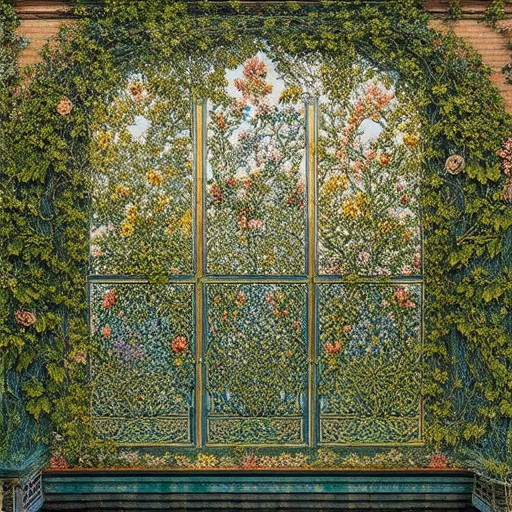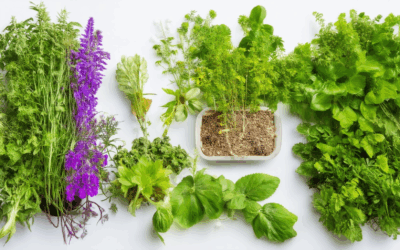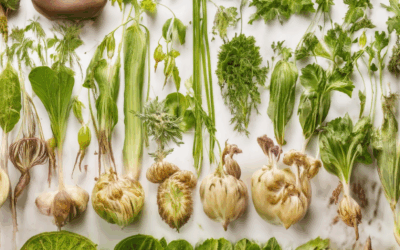Historic gardens stand as timeless testaments to human ingenuity and cultural evolution, offering a window into the past while inspiring future generations. The delicate balance of nature, artistry, and historical context found in these spaces makes their preservation a matter of profound importance. From ancient ruins to meticulously maintained estates, historic gardens hold stories waiting to be uncovered. Whether you’re a seasoned enthusiast or a newcomer to the world of heritage preservation, this guide aims to provide you with the expertise needed to protect and restore these invaluable treasures.
What Are the 4 Types of Historical Preservation?
Historical preservation encompasses various methods aimed at safeguarding and managing historic resources. Below are the primary types of historical preservation:
- Preservation
- Preservation focuses on maintaining the original fabric of a historic property, ensuring its integrity is maintained over time. This involves adaptive reuse, conservation efforts, and minimizing changes to the structure, design, and materials of the building or site. Preservation often emphasizes the importance of retaining original features while making necessary updates for functionality and safety.
-
Rehabilitation
- Rehabilitation involves restoring a historic property to a state that reflects its original appearance and function. This process typically requires replacing or repairing damaged components while preserving the overall character and style of the structure. Rehabilitation may involve the use of original materials whenever possible or compatible alternatives when necessary.
-
Restoration
- Restoration takes preservation a step further by aiming to recreate the property as it was during a specific historical period. This method is often employed when the original structure has been significantly altered or destroyed. Restoration projects rely heavily on historical records, architectural plans, and archaeological findings to ensure accuracy.
-
Reconstruction
- Reconstruction occurs when a historic property has been completely destroyed or is too severely damaged to be salvaged. In this case, historians, architects, and preservationists work together to rebuild the structure based on available historical evidence, such as photographs, blueprints, or archaeological data. Reconstruction aims to reflect the property’s historical significance as closely as possible.
By understanding these types of historical preservation, we can better appreciate the effort required to protect and maintain our cultural heritage for future generations. At Old Seed, we advocate for sustainable practices that support the preservation of heirloom seeds and traditional gardening methods, ensuring that agricultural traditions continue to thrive. Learn more .
We also recommend exploring the works of organizations like the National Trust for Historic Preservation (https://www.nationaltrust.org.uk) for deeper insights into preserving historic properties.
What Degree Do You Need to Be a Historic Preservationist?
To become a historic preservationist, you typically need either a bachelor’s or master’s degree in a relevant field. Many professionals in this field pursue degrees in:
- Bachelor’s Degree: A bachelor’s degree in disciplines such as architecture, history, archaeology, or cultural studies may suffice, especially for those with significant experience or a strong portfolio.
- Master’s Degree: A master’s degree in historic preservation, architectural history, or related fields is common, particularly for advanced roles or those seeking specialized expertise.
Additionally, certifications and professional development can enhance your credentials. Consider exploring programs offered by institutions like the National Trust for Historic Preservation or local universities. Gain hands-on experience through internships or volunteer opportunities to build a robust portfolio, which is crucial for securing positions in this competitive field.
Alternative paths include pursuing trade school programs focused on preservation techniques or entering the field with a strong background in related areas like museum studies or conservation. Remember, experience and passion for history are equally vital to succeeding as a historic preservationist.
Who Was the Famous Old Garden Designer?
The most famous old garden designer is Gertrude Jekyll. Renowned for her exceptional contributions to garden design, Gertrude Jekyll created over 400 gardens across Britain, Europe, and North America. Her work was deeply influenced by the Arts and Crafts movement, blending traditional formal elements with more naturalistic features. Gertrude Jekyll’s designs are celebrated for their innovative approach and lasting legacy in the field of gardening. https://oldseed.org/garden-designers/gertrude-jekyll/
Techniques of Historic Preservation
Historic preservation involves a variety of techniques aimed at safeguarding and reviving structures and artifacts from the past. These techniques are essential to maintain architectural integrity, cultural significance, and historical value.
Key Techniques
- Preservation: Involves maintaining the original form, materials, and function of historic buildings and objects. This includes regular maintenance and repair to prevent deterioration.
- Rehabilitation: A more intensive process that focuses on restoring a structure to its original state or adapting it for modern use while preserving its historical character.
- Restoration: Involves returning a structure to its original condition through meticulous reconstruction and replication of original materials and designs.
- Reconstruction: Combines original remnants with new materials to recreate a lost or damaged part of a structure, ensuring historical accuracy.
Advanced Techniques
- Conservation: Focuses on protecting and stabilizing materials such as wood, stone, and metal. Techniques include desiccation, cleaning, and chemical stabilization.
- Adaptation: Involves modifying historic structures to meet contemporary needs while preserving their historical essence. This may include adding accessibility features or updating electrical systems.
- Education and Interpretation: Includes creating programs and exhibits to educate the public about the history and significance of historic sites. This helps raise awareness and encourage preservation efforts.
Best Practices
- Conduct thorough assessments before any work begins to identify structural issues and determine the most appropriate preservation method.
- Use traditional materials and techniques whenever possible to ensure authenticity and compatibility with the structure’s original design.
- Consult with historians, architects, and conservation experts to ensure that preservation efforts align with historical accuracy and cultural significance.
- Secure funding through grants, donations, and partnerships to support long-term preservation projects.
We understand the importance of preserving our heritage and believe that adopting these techniques can help protect and celebrate the history embedded in our built environment. Explore our resources and learn more about how you can contribute to historic preservation efforts today.
Learn more about sustainable practices and heirloom preservation
Old Methods of Preservation
The preservation of food has been a cornerstone of human civilization, with various techniques developed over centuries to ensure food availability throughout the year. Among the oldest methods of preservation are those that rely on natural processes and simple technologies. These methods have been passed down through generations and remain relevant today, albeit often supplemented by modern techniques.
- Drying: One of the most ancient methods involves removing moisture from food to prevent spoilage. This is achieved through sun drying, shade drying, or the use of artificial dehumidifiers. Dried foods like fruits, vegetables, and meats can last several months, especially in cooler climates.
- Fermentation: Fermentation transforms food chemically, preserving it while also enhancing its flavor. Techniques like pickling, sauerkraut-making, and kimchi production involve the use of bacteria and yeast to create acidic environments that inhibit microorganisms. Fermented foods can last for years under proper storage conditions.
- Pickling: Similar to fermentation, pickling involves the preservation of vegetables through brine or vinegar solutions. This method is particularly popular for cucumbers, eggs, and other vegetables, creating a tangy and flavorful dish that remains safe to eat for extended periods.
- Smoking: Smoking is a traditional method of preserving meats, fish, and cheeses. The process involves exposing the food to smoke from wood or charcoal, which kills bacteria and inhibits spoilage while imparting a unique flavor. Smoked foods can last several weeks, especially when stored in a cool, dry place.
- Root Cellaring: Root cellaring involves storing root vegetables like potatoes and carrots in dark, cool environments. These root crops thrive in low temperatures and can last several months without spoiling, making them a reliable food source during winter months.
These old methods of preservation not only ensured food security but also provided a way to extend the shelf life of perishable goods. While modern techniques like canning, refrigeration, and freezing have revolutionized food preservation, the foundational knowledge of these traditional methods remains invaluable for anyone looking to embrace sustainable and eco-friendly practices in their kitchen.
What Are the Most Common Preservation Methods?
Preservation methods are essential for extending the shelf life of various products, from food to plants. Here are some of the most common techniques:
- Heating : Used to kill microorganisms and prevent spoilage, commonly applied to canned goods.
- Freezing : Preserves food by slowing down microbial growth, ideal for meats, fish, and vegetables.
- Sugaring : Enhances flavor and texture while preventing spoilage, often used in jams and jellies.
- Salting : Draws moisture out of foods, preserving them and inhibiting bacterial growth, popular in pickling.
- Canning : A method of sealing food in containers under high heat to kill bacteria and extend shelf life.
- Pasteurization : Reduces harmful microorganisms while retaining flavor, commonly used in milk and cheese production.
- Fermentation : Converts sugars into alcohol or acids, preserving food and developing flavor, used in making sauerkraut and kimchi.
At Old Seed, we believe in harnessing these methods thoughtfully to ensure our products last longer while maintaining their quality and taste. Explore more about preserving seeds and sustainable farming practices on our blog.
Don’t forget to check out our organic gardening tips for additional insights into maintaining freshness and sustainability in your kitchen and garden!








0 Comments